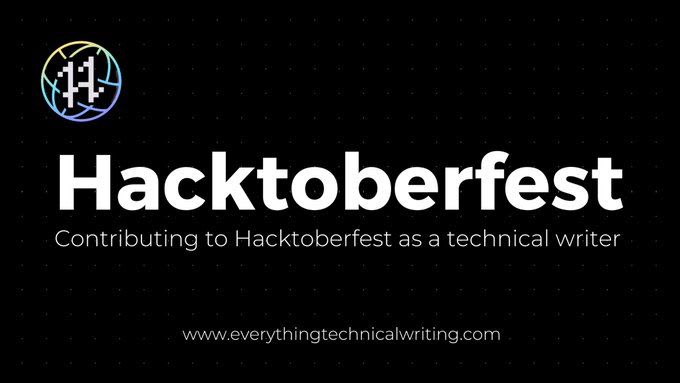
If you’ve been hearing about Hacktoberfest and would like to participate but do not know how to go about it, I got you.
Hacktoberfest is an annual event that encourages open-source enthusiasts worldwide to come together to contribute, collaborate, and learn. This year marks the 10th anniversary of the Hacktoberfest initiative.
It’s a global initiative supported by companies like GitHub and DigitalOcean, and participants are rewarded with swag (e.g., T-shirts and stickers) for making a certain number of pull requests to open-source projects. Aside from the swags, the first 50,000 participants to have their first pull or merge requests accepted will have a tree planted in their name through Tree Nation, and participants with four pull requests accepted between October 1 and October 31 will receive a unique digital reward.
In this article, you’ll discover projects participating in Hacktoberfest to which you can contribute as a technical writer or non-programmer.
Why contribute to open-source as a technical writer?
When you hear ‘contribute to open-source,’ you probably think it’s something only programmers and code-ninjas do because open-source projects are made up of codebases. However, the truth is that everybody can contribute to open-source because projects need more than codebases to be wholesome.
As a technical writer, you can contribute to open-source projects by:
- Writing documentation or fixing typos in documentation
- Writing blog posts or tutorial
- Collecting and sorting helpful data
- Translating text
- Offering feedback from user experience tests, e.t.c
Contributing to open source as a technical writer is a great way to build your technical writing portfolio. It shows potential employers that you take the initiative and seek opportunities to learn, grow, and challenge yourself. It also provides you with the opportunity to build community.
How to contribute to Hacktoberfest as a technical writer
To participate effectively in Hacktoberfirst, here are a couple of things you should know:
- Get familiar with the basics of Git: If you haven’t already, you should sign up for either a GitLab or GitLab account. You should learn how to perform tasks like fork a repo, pull a repo to your local machine, push changes to a repo, and initiate a pull request. The FirstContributions tutorial is a great way to learn how to make your first contribution. Hacktoberfest also has some helpful resources on its participation page to help you deep dive into how to contribute to repos on GitHub or GitLab effectively.
- Register on the Hacktoberfest website: You must register on the Hacktoberfest website using your GitLab or GitHub account anytime between September 26 and October 31 for your contribution to count.
- Find projects to contribute to: Finding projects to contribute to can be the most challenging part of contributing to open source. For Hacktoberfest, you must contribute to only projects participating in the Hacktoberfest challenge for your contribution to count. I’ve done some digging and compiled a list for you:
- A list of open Hacktoberfest documentation-related open on GitHub
- Projects with open documentation issues on Up-for-grabs . For each project, look for issues with the Hacktoberfest and documentation tags.
- Open source projects that non-programmers can contribute to by Awesome non-programmers
If you’d rather not contribute to projects you’re not familiar with, you can also check to see if your favorite projects or tools are participating in Hacktoberfest. Reach out to the maintainers. Introduce yourself and tell them about your interest in contributing to the project as a technical writer, and inquire if there are specific tasks you can help with.
Alternatively, you can review documentation from your favorite projects, look out for typos, or how some pages can be improved structurally and made clear, and suggest that to the contributors or make your changes and open a pull request.
Conclusion
In conclusion, you can contribute to open source even as a technical writer. Your first contribution will be intimidating, but once you learn the workflow, it’ll get better.
Below are some resources you may want to check out to learn more about contributing to open source:

